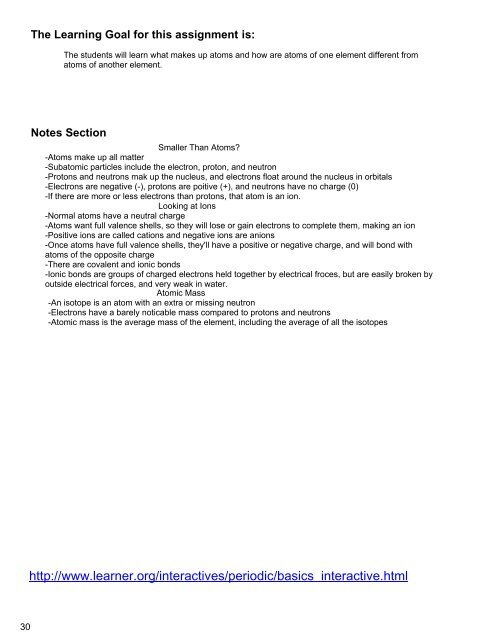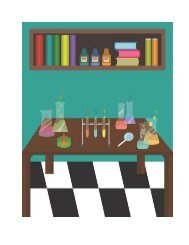(FINAL) Chemistry Notebook 2016-17
- No tags were found...
Create successful ePaper yourself
Turn your PDF publications into a flip-book with our unique Google optimized e-Paper software.
The Learning Goal for this assignment is:<br />
The students will learn what makes up atoms and how are atoms of one element different from<br />
atoms of another element.<br />
Notes Section<br />
Smaller Than Atoms?<br />
-Atoms make up all matter<br />
-Subatomic particles include the electron, proton, and neutron<br />
-Protons and neutrons mak up the nucleus, and electrons float around the nucleus in orbitals<br />
-Electrons are negative (-), protons are poitive (+), and neutrons have no charge (0)<br />
-If there are more or less electrons than protons, that atom is an ion.<br />
Looking at Ions<br />
-Normal atoms have a neutral charge<br />
-Atoms want full valence shells, so they will lose or gain electrons to complete them, making an ion<br />
-Positive ions are called cations and negative ions are anions<br />
-Once atoms have full valence shells, they'll have a positive or negative charge, and will bond with<br />
atoms of the opposite charge<br />
-There are covalent and ionic bonds<br />
-Ionic bonds are groups of charged electrons held together by electrical froces, but are easily broken by<br />
outside electrical forces, and very weak in water.<br />
Atomic Mass<br />
-An isotope is an atom with an extra or missing neutron<br />
-Electrons have a barely noticable mass compared to protons and neutrons<br />
-Atomic mass is the average mass of the element, including the average of all the isotopes<br />
http://www.learner.org/interactives/periodic/basics_interactive.html<br />
30





